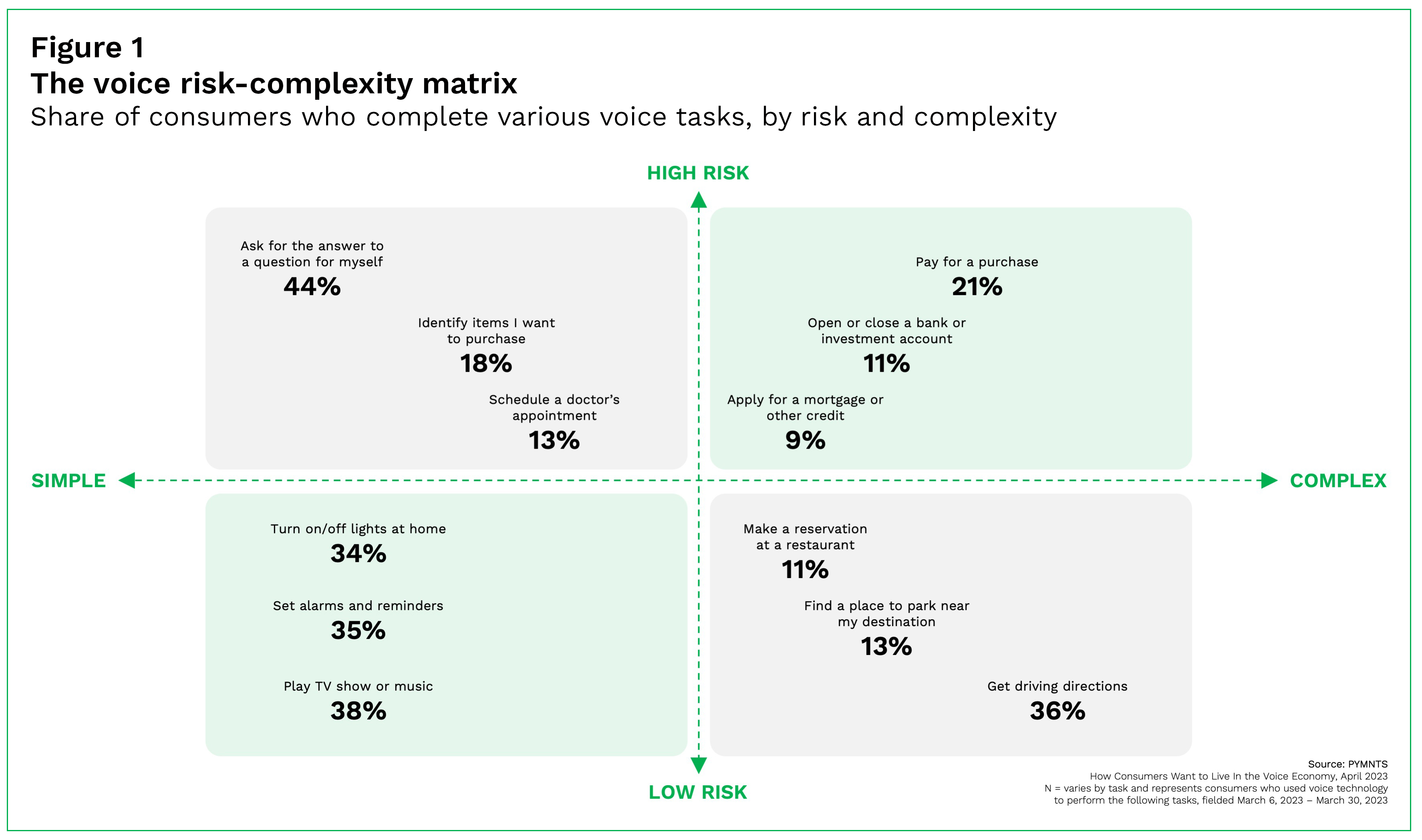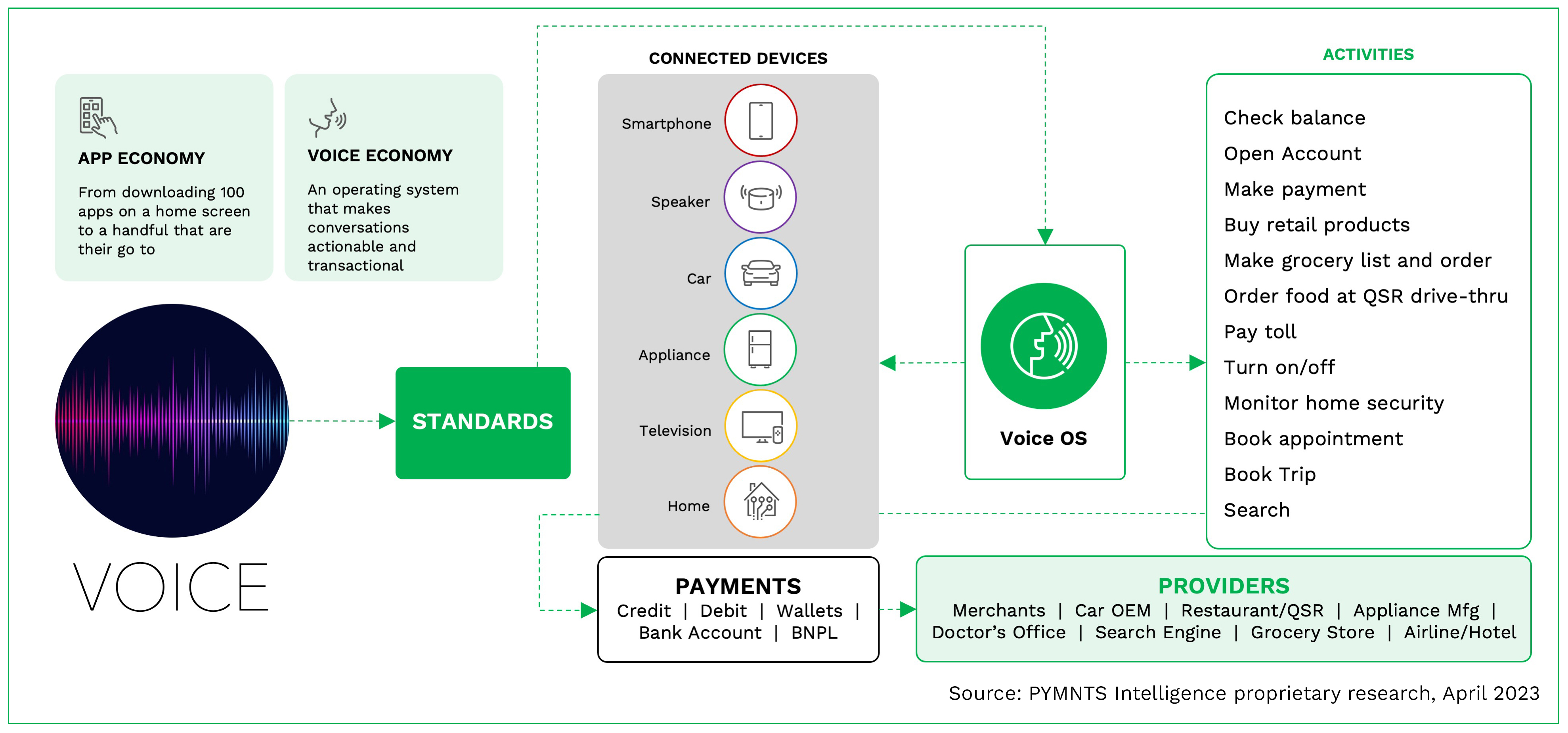Is your voice assistant smarter than an eighth-grader?
This question is important as digital-first consumers increasingly expect that hands-free voice technologies make their everyday routines intuitive, simple and more connected. Many consumers already use voice directly to find information or verify their identity via voice assistant. Yet, the main drivers behind voice technology adoption go beyond speed and convenience. While 63% of consumers say they would use voice if it were as capable as a person, 58% would use voice because it is easier and more convenient than doing tasks manually and 54% would also use it because it is faster than typing or using a touchscreen.
If the current interest in ChatGPT and other generative artificial intelligence (AI) technologies is any indication, many consumers believe that voice technology will become as capable as real people sooner rather than later. Sixty percent of U.S. consumers believe voice assistants will eventually become as smart and reliable as humans, and 46% of this group believe it will happen within five years.
For voice technology to become as smart and reliable as a human requires more than what current device-centric voice technology supports, however. Facilitating various smart voice-activated activities will require advanced voice operating systems that work across multiple devices and applications.
Amazon has recently announced its next generation of Alexa, intending to provide an advanced generative AI-driven voice assistant system. Such efforts bring smart voice technology one step closer to becoming a reality.
“Preparing for a Voice Commerce Future,” an independently produced PYMNTS Intelligence report, examines consumers’ interest in using voice technology for more than simple tasks. We surveyed 2,939 consumers in the U.S. to learn how they use voice technology today, the frictions they face and what they expect from the technology in the future. The survey was conducted from March 6 to March 30.
This is what we learned.
Voice Assistant Capabilities
Most consumers like the idea of smart, reliable voice assistants, but fewer than 1 in 10 say voice assistants are that capable today.
What digital-first consumers want from a smart voice assistant is a fully streamlined experience. However, just 7.8% of consumers say voice assistants are currently as smart and reliable as humans.
Current voice technology enables basic activities, such as making calls or asking for information. Among consumers who wanted to open or close a bank account using the technology, 37% used it to call the bank, and 58% used the bank’s voice menu to hear available options. Among consumers looking to use voice to buy airline tickets on their mobile phones, 52% asked their phone to call the airline, and 44% reported completing the purchase using voice prompts. A lack of intelligent integration between voice platforms, devices and operating systems contributes to this fragmented consumer experience.
Achieving an integrated voice economy hinges on balancing risk with complexity. Today, consumers use voice for simpler and low-risk tasks. These tasks include playing music, cited by 38% of consumers, setting alarms, cited by 35%, and asking for directions, cited by 36%. They are less apt to engage in riskier activities such as opening a bank account, at 16%, or scheduling a doctor’s appointment, at 13%, due to concerns about security of their personal or financial information.

Consumer Trust in Voice Assistant Technology
Consumers’ trust in voice technology is device-based today. That will likely change as future voice operating systems connect multiple devices and apps to facilitate complex voice-activated activities.
Today, voice technology is activity-centric on individual consumer devices. At 39%, consumers are most likely to use their voice to talk to assistants built into their mobile phones, while 25% use voice on apps on their smartphones. Twenty-seven percent of consumers use connected devices such as speakers to complete a range of activities, such as listening to music. Smaller shares of consumers access voice assistants built into their cars, at 15%, and wearable devices, at 12%.
Because voice technology is device-based and activity-centric, consumer trust also remains operating-system-centric. While 46% of consumers trust Apple to deliver a reliable, human-like voice assistant, 41% trust Google. Amazon ranks third, with just 35% of consumers reporting they trust Amazon. Yet, this paradigm where consumers use voice assistants on individual devices will most likely be completely different with the potential of advanced voice operating systems that work across multiple devices and applications — with each of these top voice contenders finding their own different paths to connect voice to commerce.

While such an integrated voice platform is not yet a reality, voice pioneers will lead the way because they show a demand for voice across devices and applications. Just 17% of consumers are voice pioneers, yet 87% believe voice assistants will eventually be as smart as real people. Today, voice pioneers say that they performed an average of 22 types of voice tasks in the last 12 months, with 93% using voice to perform financial tasks. Also, 97% of voice pioneers used voice assistants to shop and pay, and 100% used voice to perform tasks around the home and for identification/information. Their interest and confidence in using voice across a wide variety of applications indicates that these early adopters can also drive development and usage of the next generation of voice technology.
Conclusion
Many consumers use voice technology primarily for simple tasks such as getting information, while tech-savvy consumers are comfortable using voice to engage in financial transactions. As voice can be significantly faster and more convenient than manual transactions, voice technologies have the potential to streamline communications and activities beyond simple tasks. To do so, the intelligence and functionality will need to continue to improve and integrate with future AI-enabled voice operating systems that work across multiple devices and applications. Even as today’s leading voice technology providers find their own paths to connect voice to commerce, businesses that keep abreast as the voice economy develops will be best positioned to succeed in the future.
Methodology
“Preparing for a Voice Commerce Future,” an independently produced PYMNTS Intelligence report, examines consumers’ interest in using voice technology for more than simple tasks. We surveyed 2,939 consumers in the U.S. to learn how they use voice technology, the frictions they face and what they expect from the technology in the future. The survey was conducted from March 6 to March 30. Our sample was balanced to match the U.S. adult population in key demographic variables: 51% of respondents identified as female, 32% were college-educated and 37% declared annual incomes of more than $100,000.

